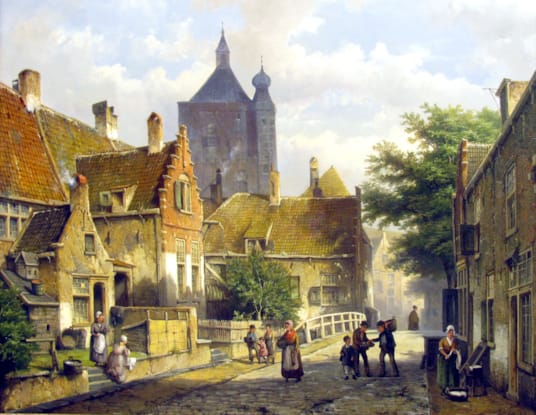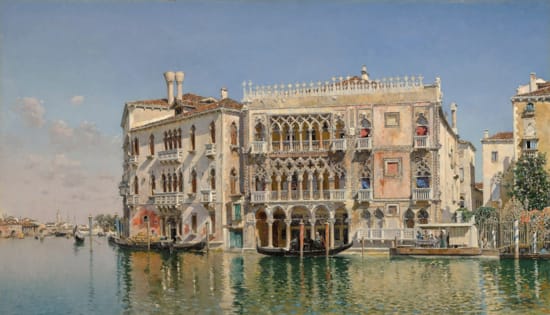William James
(1754 - 1771)
The Grand Canal, Venice
Oil on canvas
29⅝ x 50¼ in – 75.3 x 127.8 cm
Frame size
38¾ x 59¼ in – 98.4 x 150.5 cm
29⅝ x 50¼ in – 75.3 x 127.8 cm
Frame size
38¾ x 59¼ in – 98.4 x 150.5 cm
Tel.: +44 (0)20 7839 7693
Provenance
Spiller Gallery, London;
Private collection, UK since 1979
Private collection, UK since 1979
Biography
William James, a painter of Egyptian Temples, London views, but above all renowned as a painter of Venice remains something of an enigma.
Neither birth nor death dates are known, however, William James exhibited in London at Spring Gardens from 1761-1768 and at the Royal Academy between 1769-1771 showing some of his works depicting Egyptian Temples and Oriental Scenes. In the following year he exhibited two views of London and Westminster also at the Royal Academy. Works exhibited at the Royal Academy include: 1769 “Temple of Ismandous at Luxer” and “The Temple of Isis”; 1770 “Temple of Cous” and “The Palace of Memnon” and in 1771 a view of “Westminster from the Adelphi Building in Durham Yard” and a Venetian scene entitled “The Grand Canal, Venice”.
James is thought to have been a studio assistant to Antonio Canal Canaletto (1697-1768) on his visit to England in 1754. James was clearly influenced by Canaletto and he and his studio produced Venetian views, such views had grown immeasurably in popularity in the latter half of the eighteenth and into the nineteenth century with the increasing numbers of gentlemen experiencing the ‘Grand Tour’ and the works by Canaletto and his contemporaries being acquired by English collectors of the period.
His works can be seen in museums in: London, The Victoria and Albert Museum; Oxford University and Surrey, Hampton Court Palace.
Neither birth nor death dates are known, however, William James exhibited in London at Spring Gardens from 1761-1768 and at the Royal Academy between 1769-1771 showing some of his works depicting Egyptian Temples and Oriental Scenes. In the following year he exhibited two views of London and Westminster also at the Royal Academy. Works exhibited at the Royal Academy include: 1769 “Temple of Ismandous at Luxer” and “The Temple of Isis”; 1770 “Temple of Cous” and “The Palace of Memnon” and in 1771 a view of “Westminster from the Adelphi Building in Durham Yard” and a Venetian scene entitled “The Grand Canal, Venice”.
James is thought to have been a studio assistant to Antonio Canal Canaletto (1697-1768) on his visit to England in 1754. James was clearly influenced by Canaletto and he and his studio produced Venetian views, such views had grown immeasurably in popularity in the latter half of the eighteenth and into the nineteenth century with the increasing numbers of gentlemen experiencing the ‘Grand Tour’ and the works by Canaletto and his contemporaries being acquired by English collectors of the period.
His works can be seen in museums in: London, The Victoria and Albert Museum; Oxford University and Surrey, Hampton Court Palace.




_2632024T164011.378.jpg?width=550&height=415&format=jpg&quality=80&mode=max)